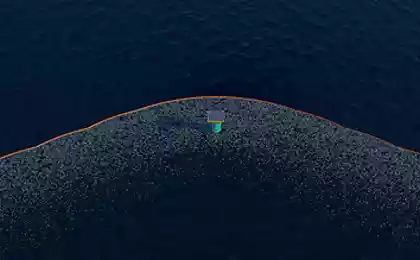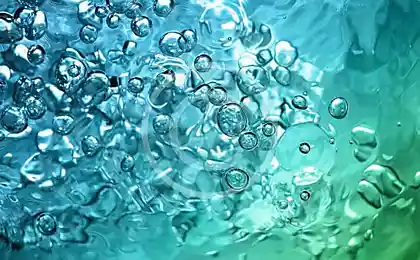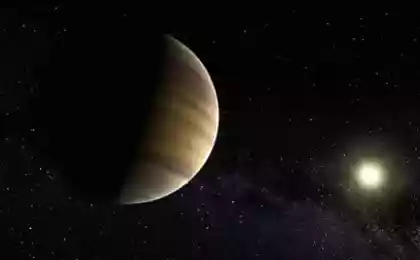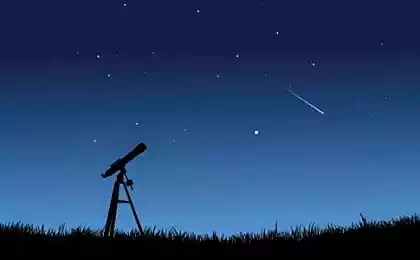697
The presence of oceans on the exoplanet can be detected by a characteristic bright luster

As an artist imagined exoplanet Kepler-62f, located 1,200 light-years away in the constellation Lyra. She has signs of liquid water i>
Not long ago, the simple discovery of extrasolar planets themselves was a sensation - but now, thanks to the telescope & quot; Kepler & quot ;, they found several thousand . And there is a question of transformation of quantity into a different quality - for example, if there is life?
According to modern concepts, life requires liquid water. But the telescope, "Kepler" transit method is the planet - by changing the brightness of stars at a time when the planet passed between it and the telescope. And especially a lot of data about the planet itself in this manner do not get.
July 8 at the Royal Space Society presentation of a new space telescope, which is soon to intercede on duty instead of the good old Telescope. Hubble. Space Telescope, the James Webb (James Webb Space Telescope, JWST), is to go into orbit in 2018, and will be able to see more details - for example, to distinguish between the presence of some atmosphere of exoplanets.
And it's time astronomers have come up with new ways to find life on exoplanets. But any theory must be checked in practice - as the only planet on which there really is life, is still the only Earth. Although around our house constantly spinning a huge number of satellites, including those equipped with observation instruments - rare machines observe the entire planet and from a distance, as is the case with exoplanets.
We have to use the rare opportunity to observe the Earth and try to "look at her life" research provided by remote devices. For example, in 1993 the famous astronomer and science popularizer Carl Sagan associates used images taken by the Galileo probe, intended to study Jupiter. The pictures he made in 1990.
In 2009, NASA's cranked out a unique operation to search for water ice on the moon. Lunar CRater Observation and Sensing Satellite (Spacecraft observations of lunar craters and sensing, LCROSS) - NASA's space probe, launched June 18, 2009 along with the Lunar Reconnaissance Orbiter to the Moon as part of the space program Lunar Precursor Robotic Program.
She had to finally check the presence of water ice at the south pole of the moon, which could play an important role for future manned missions to the moon. During the mission in the area of the crater Cabeus fell booster "Centaurus". As a result of the fall thrown a cloud of gas and dust, through which the flying LCROSS, analyzing the substance lifted from the bottom of the crater. LCROSS then fell into the same crater, but it managed to convey to Earth the results of their research.
In addition to the analysis of gas and dust, LCROSS gave a few shots of the Earth, are in different phases - reflect different amounts of light from the sun, as well as the moon phase changes depending on the relative positions of the Earth, moon and sun. This was done to calibrate the instrument probe, but the images have been used by scientists to assess how habitable planet with vast oceans can look in the infrared and ultraviolet ranges.
Выяснилось, in the presence of visible light oceans brightness of reflected light increases to 40% and in the infrared - and all 80%. The data obtained will make good on exoplanets assess the presence of liquid water on the basis of observations of the future telescope JWST.
Of course, the bright glint can provide not only the oceans - such as thick clouds or the presence of large areas of ice on the planet's surface could lead to a similar effect. For accurate estimations have to study all the data that you can get on a distant planet, including the temperature and the nature of the atmosphere.
Source: geektimes.ru/post/261922/
C Sensibo any air conditioning "wiser"
Flying cars - a radical solution to the problem of congestion























